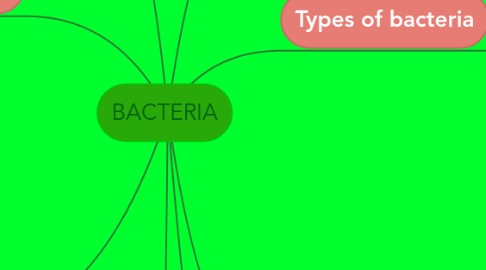BACTERIA
por Necane Sanchez


1. Origin
1.1. The ancestors of modern bacteria were unicellular microorganisms that were the first forms of life to appear on Earth, about 4 billion years ago. For about 3 billion years, most organisms were microscopic, and bacteria and archaea were the dominant forms of life.
2. History
2.1. Bacteria were first observed by the Dutch microscopist Antonie van Leeuwenhoek in 1676, using a single-lens microscope of his own design.[185] He then published his observations in a series of letters to the Royal Society of London. Bacteria were Leeuwenhoek's most remarkable microscopic discovery. They were just at the limit of what his simple lenses could make out and, in one of the most striking hiatuses in the history of science, no one else would see them again for over a century. Only then were his by-then-largely-forgotten observations of bacteria.
3. Kingdom monera
3.1. The Kingdom Monera is formade by unicellular prokaryotes. The most well-know are bacteria.
4. Bacteria , people and the enviroment
4.1. Harmful bacteria : cause illnesses in people and illnesses caused by bacteria are treated with antibiotics.
4.2. Helpful bacteria : live in our intestines and help us digest some substances from the humus on the ground and help recycle matter. Some saprphytic bacteria are used to make cheese, yogurt and vinegar.
5. Etymology
5.1. The word bacteria is the plural of the New Latin bacterium, which is the latinisation of the Greek. The diminutive of bacteria meaning "staff, cane", because the first ones to be discovered were rod-shaped.
6. Morphology
6.1. Bacteria display a wide diversity of shapes and sizes, called morphologies. Bacterial cells are about one-tenth the size of eukaryotic cells.
7. What are bacteria?
7.1. Bacteria are the most numerous organisms on Earth. They are found in the air,in water, in the ground, on our skin, and even in our intestines.
7.1.1. The vital functions of bacteria
7.1.1.1. Nutrition: Bacteria exhibit all types of nutrition. There are autotrophic bacteria(which create their own nutrients throw photosyntesis) and heterotrophic bacteria ( which take nutrients from the enviroment and can be saprophytic, symbiotic or parasitic).Saprophytic bacteria-get their nutrients by descomposing the remainds of living things in the enviroment. Symbiotic bacteria-obtein their nutrients from other living things. Parasitic bacteria-take their nutrients from other organisms.
7.1.1.2. Interaction: Some bacteria move while others are immoving
7.1.1.3. Reproduction: Bacteria reproduce asexually.
8. Types of bacteria
8.1. Bacteria are classified according to their shape
8.1.1. Cooci
8.1.2. Vibrios
8.1.3. Bacilli
8.1.4. Spirochaetes
